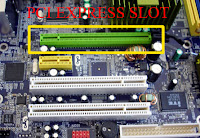Important Thing To Test PCI Express Video Card
It 'important to have a video card capable of fully satisfying their needs.
VIDEO CARDS FOR WORK OR PLAY
- Economic-end video cards (under $ 50) are installed in the small office PC but I am not able to support multimedia applications and modern games.
- The mid-range graphics cards are able to tackle problems without requiring the applications' graphics processing more complex in Windows Vista even if they lose a few shots.
- Who uses the computer primarily to play, should be oriented towards the high end cards: they provided a better use and powerful graphics processors support several games based on Direct X 10 on Windows Vista.
SPEED 'THE VIDEO CARD ON THE GRAPHIC PROCESSOR
There are many manufacturers of graphics cards, but under the sink in most cases we find graphics processors from ATI (Radeon) or nVidia (GeForce). The speed of a video card is determined primarily by the graphics chip used, also decisive for the classification of a card in the mid-range or high.
THE CONNECTION OF GRAPHICS CARD
The latest models of computers have motherboards with PCI-Express slot (PCI-E), but older models accommodate the AGP slot (Accelerated Graphics Port).
The PCI-Express is the fastest known as PCI-E x16, transfers data four times faster than AGP.
If you need to upgrade the video card and you have an AGP slot should perhaps think about upgrading the motherboard so you can install a PCI-Express.
The SIZE OF PCI EXPRESS VIDEO CARD
The powerful graphics cards are also bulky and require large heat sinks, which inevitably reduces the available space in houses. Very often their thick cover even a second open slot
PCI SLOT
PCI EXPRESS CARD
PCI EXPRESS 2.0
Labels: PCI CARD










